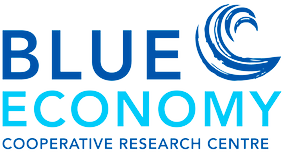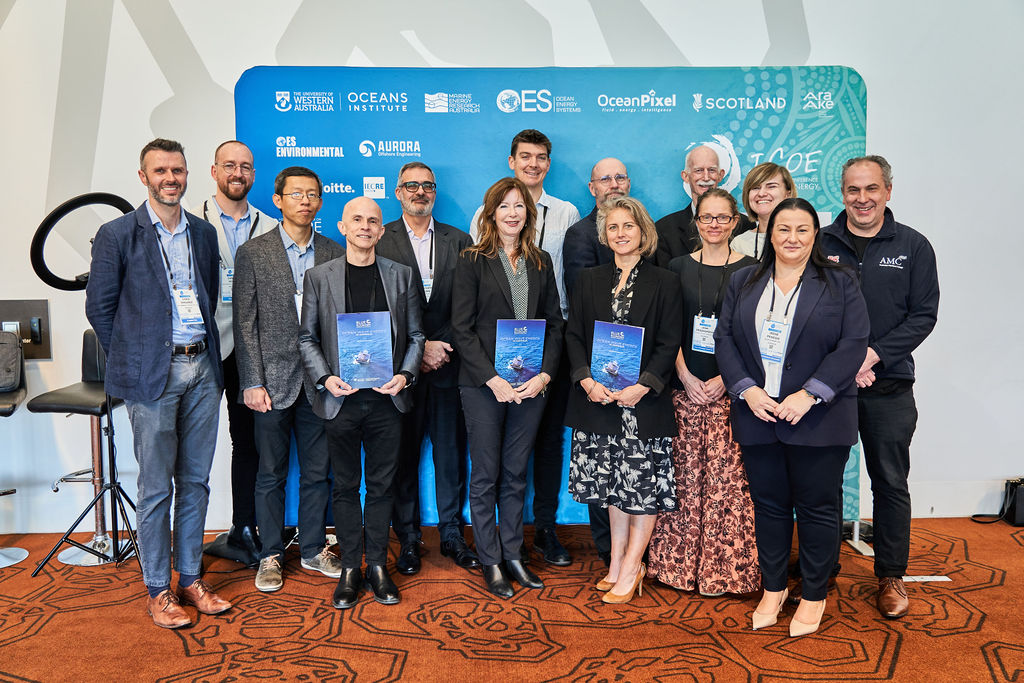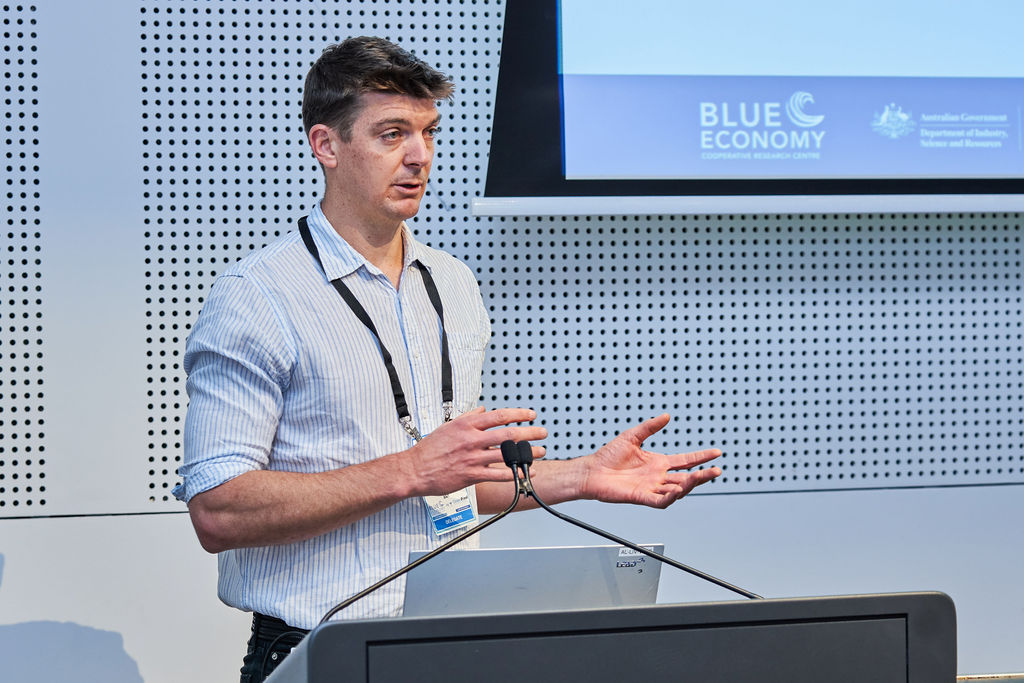Ocean Wave Energy Report details recommendations for development of wave energy in Australia
Ocean wave energy is undergoing a renaissance, with significant funding and effort worldwide devoted to this source of clean energy.
This is driven by multiple factors, including the need for decarbonisation and renewable energy development in the face of climate change, the recognition of the diverse benefits of ocean wave energy as part of clean energy systems and a burgeoning Blue Economy.

This month, at the 2024 International Conference on Ocean Energy the Blue Economy CRC project led by The University of Western Australia and project partners launched the Ocean Wave Energy in Australia Report – a comprehensive overview of the ocean wave energy sector in Australia.
The report details an overview of our ocean wave resource, market opportunities, applications and integration, developing a wave energy industry and an environmental and social analysis.
With Australia having the largest wave energy resource of any country in the world and a critical enabler in helping Australia achieve its net zero targets, the time for action is now.
Hugh Wolgamot, project lead from The University of Western Australia states:
“Australia has the best wave energy resource in the world but wave energy does not feature in most conversations around renewable energy opportunities. This report aims at bringing wave energy to the forefront of the conversation on the energy transition by demonstrating Australia’s wave energy potential and presenting recommendations to regulators, developers, researchers and policymakers.”
The report highlights seven key recommendations across three key themes for the development of wave energy in Australia with the key recommendation that
Federal and State Governments in Australia should take a strategic view of the wave energy industry in order to achieve the maximum national benefit from this potentially critical national resource.
Detailed recommendations include:
Wave energy should be incorporated into national and State planning.
1. The Australian Renewable Energy Agency (ARENA) should fund a study to determine the national benefit of developing a wave energy industry, including benefits to economic and social development, sovereign capability, environmental sustainability and export capacity through the development of a leading domestic industry.
2. The Australian Energy Market Operator’s Integrated System Plan (ISP) should evaluate wave energy possibilities, and in particular include and evaluate the impact of wave energy on 2050 requirements for energy storage.
3. Wave energy should be included in the Sustainable Ocean Plan and considered alongside other renewable energy technologies.
Funding efforts should be consistent and at scale to de-risk and accelerate deployments.
4. Projects on different scales and across different market applications should be funded to validate wave energy technology and to demonstrate its national benefits over longer periods.
5. An integrated study to establish national guidelines for using wave energy for coastal protection should be carried out.
Sharing noncompetitive information will accelerate the local industry.
6. Baseline data, data sharing across jurisdictions and collaborations, and community engagement should be incentivised by federal and State Governments as key to the success of wave energy projects.
7. Validated, high-resolution, long-term analyses of wave climate should be carried out for the declared offshore wind zones and for strategic wave energy hot spots.


















